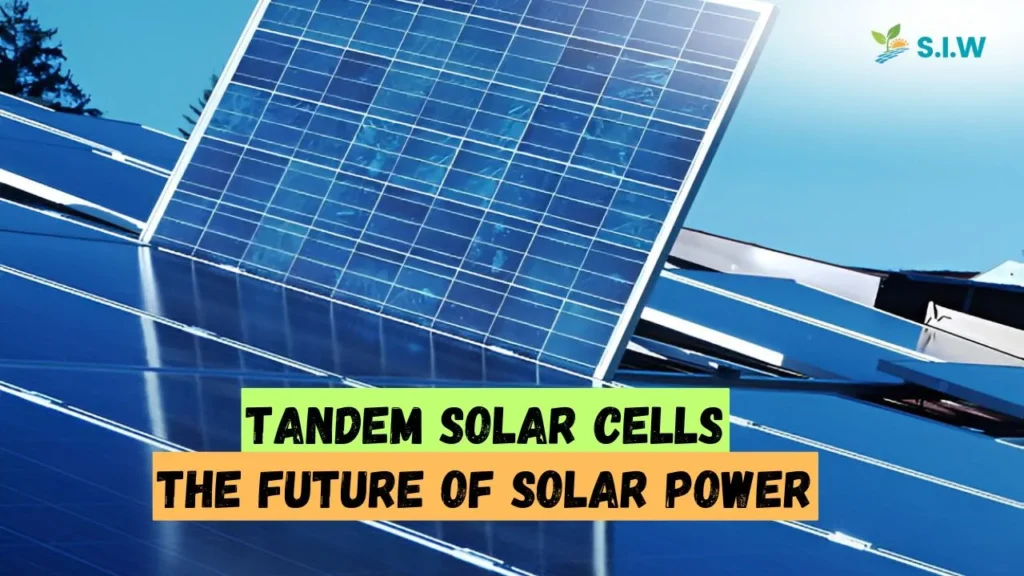Tandem solar cells represent the next frontier in renewable energy, offering significantly higher efficiency than conventional silicon panels. With these advanced cells gaining momentum, especially through commercial launches by companies like Oxford PV, the global solar energy landscape is poised for a major transformation.
What Are Tandem Solar Cells?
Tandem solar cells combine two or more layers of photovoltaic materials to capture different parts of the solar spectrum. Traditional silicon-based panels are limited in their energy conversion capacity because they only absorb certain wavelengths of light. However, tandem cells stack materials—such as perovskite on silicon—to harness a broader range of sunlight, improving efficiency.
Perovskite, a key material in tandem cells, complements silicon by absorbing high-energy blue light, while silicon captures lower-energy red and infrared light. This synergy allows tandem cells to convert more sunlight into electricity than single-layer panels, achieving efficiency rates exceeding 26% in lab conditions—compared to around 22% for top silicon panels.
Benefits of Tandem Solar Technology
- Increased Efficiency
The primary advantage of tandem solar cells is their efficiency. Recent commercial panels from Oxford PV offer 24.5% efficiency, which translates to 20% more energy output than conventional silicon panels of the same size. - Reduced Land Use
Higher efficiency means more electricity can be generated from smaller spaces. This feature is particularly beneficial for urban installations and large-scale solar farms, where land availability and space optimization are critical. - Lower Costs in the Long Run
While tandem cells are currently more expensive to produce, the higher energy yield reduces the overall cost per kilowatt-hour (kWh) over the system’s lifespan, improving the levelized cost of electricity (LCOE). - Adaptability to Various Applications
Tandem technology is being explored for integration into non-traditional surfaces, such as windows, vehicles, and even aircraft, marking a step towards more ubiquitous solar adoption.
Challenges in Scaling Tandem Solar Cells
Despite their promise, tandem solar cells face challenges. The complex manufacturing process—particularly integrating perovskite with silicon—makes them more expensive and difficult to produce at scale. Additionally, concerns about the long-term durability of perovskite, as well as the need for rare materials like indium, remain obstacles that researchers are actively addressing.
Companies like Oxford PV are at the forefront of overcoming these challenges. They have recently initiated the commercial production of tandem panels, shipping their first orders to utility-scale installations in the U.S. These developments indicate that the transition from lab-scale innovation to real-world application is underway, but scaling to gigawatt-level production will take time.
Impact on the Future of Solar Energy
Tandem solar cells are a key driver in accelerating the global shift to renewable energy. Their higher efficiency not only reduces the carbon footprint of energy generation but also supports the electrification of industries, homes, and transportation. By producing more power from less surface area, tandem panels make solar a more practical solution for densely populated regions and urban developments.
As this technology matures, we can expect tandem solar cells to play a central role in achieving global clean energy targets. Their potential to power cars, buildings, and infrastructure offers a glimpse of a future where solar energy is seamlessly integrated into daily life.
Final Thoughts
Tandem solar cells symbolize the next era of solar innovation, promising significant advancements in efficiency, space utilization, and application versatility. While challenges remain in scaling production, the ongoing efforts by companies like Oxford PV demonstrate that the future of solar power lies in tandem technology. As research continues and production scales up, tandem cells will become increasingly accessible, bringing us closer to a sustainable, solar-powered world.








